The image of the East Wing of the White House ripped apart by our mad king reminded me of another magnificent historic site of ruination (and symbol of a ruined-nation), and another sovereign overcome by a compulsive, ego-driven madness, 21 centuries ago.
Back in the first century BCE (or BC if you prefer), King Herod the Great aimed to make Judea Great Again, but was feared by his family - those whom he didn’t murder - and absolutely detested by his people. There are so many parallels between Herod and Trump that I’ve lost count, beginning with the many marriages and brutal family separation policies.
The Western Wall, which Jews venerate above any other place on earth, was, in fact, the product of a mad king’s megalomania…. The two mad kings have left a trail of construction - and a legacy of destruction.
Speaking of family separation, Herod’s killing of Jewish male babies, the New Testament’s “Slaughter of the Innocents,” is one crime that is not substantiated by the main secular historical sources of the time and could well have been drummed up by New Testament writers to draw parallels between Jesus’ birth and Moses’ infancy. But considering Herod killed three of his own sons, it’s not entirely implausible.
Since there were a number of people named Herod who ruled in and around the first century, a quick look at which one we’re talking about:
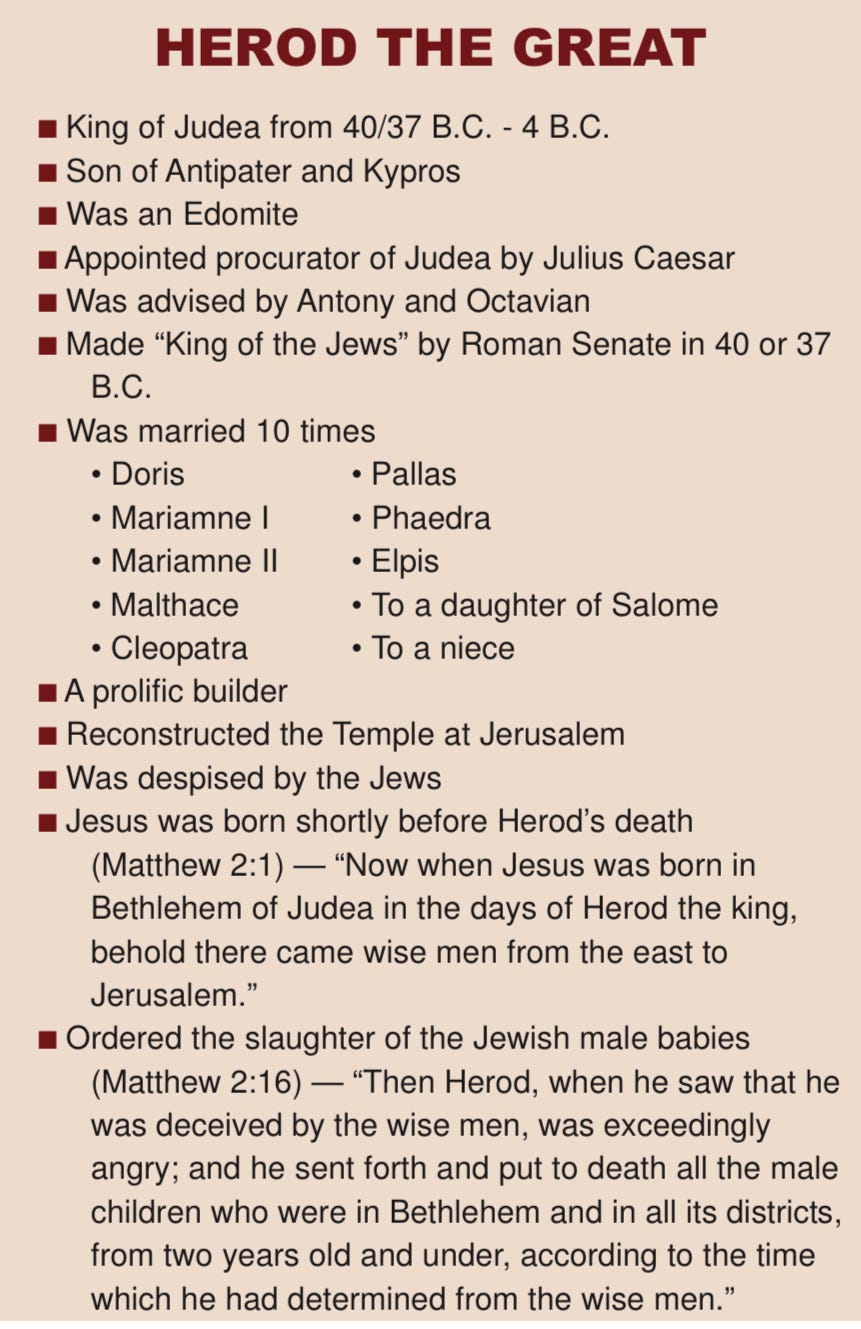
Michael Satlow, scholar of ancient Judaism at Brown University, makes several key points about Herod in his podcast, From Israelite to Jew (episode 15), which I share here:
Here are some key points from Satlow’s podcast, as well as Abba Eban’s Heritage series1 (a reminder to sign up for my three part seminar on Heritage: Civilization and the Jews which discusses Herod in episode two):
The Roman emperor Augustus is said to have quipped that it was “better to be Herod’s pig than his son.” In other words, Herod, considered a “half-breed” and inauthentic Jew by many Judaeans, aimed to display public piety by adhering to kosher laws. Meanwhile, he was insanely suspicious of family and many of them met unfortunate, untimely ends. While to our knowledge Trump has not been responsible for assassinations, his ruthlessness toward political rivals and utter lack of empathy calls to mind Herod’s thin skin and sociopathy.
Herod was always considered an outsider - seen as an Idumean interloper and not of royal or Jewish blood - and never fully accepted in the social circles of the Jewish aristocracy. Similarly, Trump has never gotten over his sense of betrayal at the hands of New Yorkers of influence in politics, economics and the media. Now he lords himself over those same elites with - literally - a vengeance.
Herod was so fearful that he wouldn’t be mourned, that he left instructions for his soldiers to kill imprisoned Jewish notables upon his death (Josephus, Antiquities 17:174-181) so that there would be grieving throughout the land. Fortunately, after his death, his sister Salome countermanded the order and released the Jewish leaders. Meanwhile, as Trump’s polling numbers continue to fall, and he witnesses 7 million taking to the streets to protest his rule on No Kings Day, he is becoming more unhinged, as evidenced by his post-No Kings “poop video.”
Herod’s appetite for vengeance was insatiable. He razed any towns that refused to pay tribute and sold their inhabitants to slavery. With Trump, we can begin with his on-and-off punitive tariffs on allies and now former allies2 (which translates to a tax on Americans) and National Guard deployments in blue cities. Both Trump and Herod, have become synonyms for vengeance. For both, the cruelty is the point.
Herod was obsessed with building - and cementing an immortal imprint on the landscape, through projects like his palaces on Masada and in Jericho, the radical rebuilding of the Temple in Jerusalem, doubling the size of its platform, the spectacular port of Caesarea, and his own version of Trump’s planned triumphal arch, Herodium, a palace-fortress-monument named for himself, visible for miles around, where he planned to be buried.3
The temple reconstruction is most analogous to Trump’s smashing of the White House and plans to construct a ballroom bigger than the White House itself. According to the Roman/Jewish historian Josephus, Herod, who built so obsessively for the sake of his own glory, believed that reimagining the temple in a grand scale would be a task great enough “to assure his eternal remembrance” (Antiquities 15.380).
Reportedly, Trump plans to name the new White House ballroom, which will be larger than the White House itself, after himself. 4
And indeed, Herod’s temple was a sublime feat of engineering - and, in true Trump fashion, neither lacking in grandeur nor gold. Josephus, who witnessed the temple first-hand, wrote:
The exterior of the building lacked nothing that could astound either mind or eye. . . . To approaching strangers it appeared from a distance like a snow-clad mountain; for all that was not over laid with gold was of purest white. (Jewish War 5.222–23).
The first step in rebuilding the temple was the literal demolition of the temple that had been standing since the return from Babylonian exile, five centuries before. Unlike Trump, Herod gave the people advance notice that the demo would occur, but he informed them using absolutely Trumpian language. Quoting Josephus, BYU historian David Rolph Seely describes it in this way: 5
Josephus records that Herod, in the eighteenth year of his reign (20–19 BC), gave a speech to the people in which he proposed to rebuild Zerubbabel’s temple in gratitude for the fact that he had, “by the will of God, brought the Jewish nation to such a state of prosperity as it has never known before.” (Antiquities 15.383).6
So a madness consisting of impulsiveness, paranoia, and delusions of grandeur, fueled by a massively inflated ego, characterizes both mad kings. In their eyes, only one person was greater than them - Caesar, in Herod’s case, and Putin, in Trump’s.
But while Herod ruled for a depressingly long time, the rejection of his people clouded his every waking moment, and his madness presaged his inevitable fall.
Author Tuvia Book wrote of Herod:
The outward grandeur and prosperity of Herod’s reign concealed the increasing turbulence of his private life. After the murder of his brother-in-law Aristobulus, Herod was pathologically mistrustful and determined to slay any remnants of the Hasmoneans and their supporters. Furthermore, the frequent conspiracies of his large and fractious family brought out his cruelty and paranoia. He lured his wife’s grandfather, the aged and mutilated Hyrcanus II, to Judea and had him murdered. Herod went on to murder his beloved wife Miriam in 28 BCE, on the prodding of his sister Salome.
The atmosphere of suspicion, intrigue and executions often cast a cloud over the external splendor and material success that Herod enjoyed throughout most of his life…the hostility between Herod and the people at large continued to the end of his life, and his rule was generally regarded as a time of tyranny, despite his efforts to win the sympathy of the nation.
The Western Wall and the White House Ballroom
When exploring Jerusalem today, it is hard not to be amazed at Herod’s mastery as a builder. There is a single stone in the extended Western Wall, which has been uncovered in recent decades as part of the Western Wall tunnel project, that is considered one of the heaviest objects ever lifted by humans without the assistance of any machinery. This stone is about 45 feet in length, about 13 ft. wide, and weighs about 570 tons.
The Western Wall, which Jews venerate above any other place on earth, was, in fact, the product of a mad king’s megalomania. One wonders whether Americans will one day look at the White House ballroom in the same way, or more likely, out of curiosity as to how Americans could have voted for the guy.
I’d prefer that the ballroom be repurposed into a museum recalling the true events of January 6, or a model of Trump’s concentration camps and memorial to his most vulnerable victims: refugees, innocent Venezuelan boatmen, pregnant rape victims, children denied school lunches and SNAP benefits, unvaccinated kids, political foes. But it’s more likely that the ballroom will come down like a statue of Saddam Hussein.
Everything Herod built is now an archeological ruin, beautified only by the layers of civilization that have covered it. Caesarea is case in point. Herod built it, but since his death it has been rebuilt again and again, by Byzantines, Arabs, Crusaders, and Zionist pioneers. The port has seen it all. In rabbinic times there were periods of harmony there as well as great friction between Jews and non-Jews. Napoleon passed it on his way to Akko. Hannah Senesh wrote her most famous poetry there. Lots of history that goes beyond Herod’s megalomania, though we’ve come full circle in recent years, as it has become the home of many of Israel’s wealthiest and most corrupt leaders (including the current prime minister).
But among the constructions of this ancient tyrant, the Kotel remains an anomaly. People literally worship there and kiss its stones. Maybe it shouldn’t be so unquestionably venerated. For those who lament the generations of diaspora Jews who shed tears longing to see it, we should also reserve some of our wailing for the memory of the thousands of non-Jewish slaves (estimates run to 10,000) Herod rounded up to drag - more accurately, roll - that enormous stone into place and build the thing.
And then there’s Masada, the mountaintop palace that dominates the wilderness skyline. Well, Trump also wanted his structures to be the first thing people see when they look up. He sounded downright giddy on 9/11 when sharing in an interview that, with the World Trade Center now in ruins, his Wall Street building would now be the tallest in lower Manhattan.
And his “Arc du Trump,” the fascist-style victory arch Trump is planning,7 will desecrate the sacred soil between the Lincoln Memorial and Arlington Cemetery.
Herod loved arches, though most built around this time served more practical and less decorative purposes, like the arched aqueduct in Caesarea8 and Robinson’s Arch9 in Jerusalem. But he considered the temple in Jerusalem to be the greatest possible tribute to himself.
And therein lies the greatest analogy that can be drawn between the two mad kings. The temple, though built by the wrong person for all the wrong reasons, was indeed a major contribution to the world, a construction that at first was criticized sharply but eventually was revered. Similarly, if Trump succeeds in bringing new possibilities for peaceful coexistence in the Middle East - even if for all the wrong reasons - it will complicate his legacy, just as Herod’s is complicated. But it will not reduce one iota the damage he has done, and the need to protest and ultimately replace this leadership through democratic means.
The two mad kings have left a trail of construction - and a legacy of destruction.
See Herod described about 38 minutes in.
For the flimsiest of reasons, like Ontario’s accurate Ronald Reagan ad criticizing tariffs.
Herod the Great’s visionary building programs, ingenious development of trade with other countries, and advancement of his nation’s interests were remarkable. He used his magnificent building projects to strengthen his relationship with Rome and establish himself as the greatest king the Jews ever had.
Jerusalem
Herod rebuilt the temple out of marble and gold. The building was taller than a fifteen-story building, and its foundation included limestone blocks weighing more than five hundred tons. On the western hill of the city, he built a spectacular complex that contained reception halls, apartments, fountains, gardens, baths, and a fortress for his personal guards. He also built a Greek theater and hippodrome, paved the streets, and installed sewers.
Masada
On top of a plateau in the Judea Wilderness, this fortress was one of the wonders of the ancient world. A spectacular palace suspended from one end of the plateau, luxurious hot and cold baths, mosaic floors, swimming pools, huge storehouses, and cisterns holding millions of gallons of water helped to make this dry, wilderness settlement bearable for its occupants.
Jericho
This palace was built on both sides of a wadi (a dry, deep riverbed), connected by a bridge. One wing contained a huge, marble-floored hall where Herod received guests. Next to it were peristyle gardens, dining halls, and a complete Roman bath. Across the wadi, another large building housed baths, a swimming pool, and gardens.
Caesarea
Needing contact with the Roman world for its military support and trade opportunities, Herod build Caesarea into one of the most amazing seaports of the ancient world. Founded in 22 BC, the city housed a large theater, amphitheater, hippodrome, a massive temple to Augustus, and an elaborate palace by the sea.
The city’s real glory, however, lay in its forty-acre, man-made harbor. A lighthouse guided ships into the harbor that brought Roman legions, marble, granite, and the Hellenistic culture of the region. From that harbor, ships also carried spices, olive oil, grain, and eventually the gospel to the far reaches of the world.
The Buildings Today
Today, all that remains of Herod’s building projects are massive ruins. Herod lived only to honor himself, and his efforts have literally crumbled to the ground.
It is heartbreaking to watch Jackie Kennedy’s historic televised tour of the White House again, to see the respect and honor given to that sacred space and her humility as its custodian.
See also a historical review of Herod’s rebuilding the Second Temple that can be found in Ehud Netzer, The Architecture of Herod the Great Builder (Tübingen: Mohr Siebeck, 2006), 137–78; reprinted in paperback by Grand Rapids, MI: Baker Books, 2006.
Seely’s account continues:
“His envisioned rebuilding project was a delicate operation since it would involve the complete demolition of Zerubbabel’s temple and the expeditious building of the new temple. In order to assuage the fears of the people that he would not build the new temple after demolishing the old one, in consultation with religious leaders Herod first prepared all the necessary materials for his temple. Next, he allegedly appointed ten thousand men to rebuild the temple and specifically trained a thousand priests as builders and stonemasons so they would be able to carry out the construction in the inner courts of the temple where nonpriests would not be allowed to enter (Antiquities 15.390–91). For the erection of the altar, Herod followed the biblical prescription (Exodus 20:22) and used stones quarried nearby not touched by iron (Jewish War 5.225). The temple proper was built in a year and a half and the surrounding porticos and courtyards in eight years (Antiquities 15.420–21). However, construction on the whole complex continued for more than eighty years from the time it was begun and was only completed in AD 63 (Antiquities 20.219; compare John 2:19).”
See Hitler’s planned triumphal arch, which would have been massive.
Robinson’s Arch:
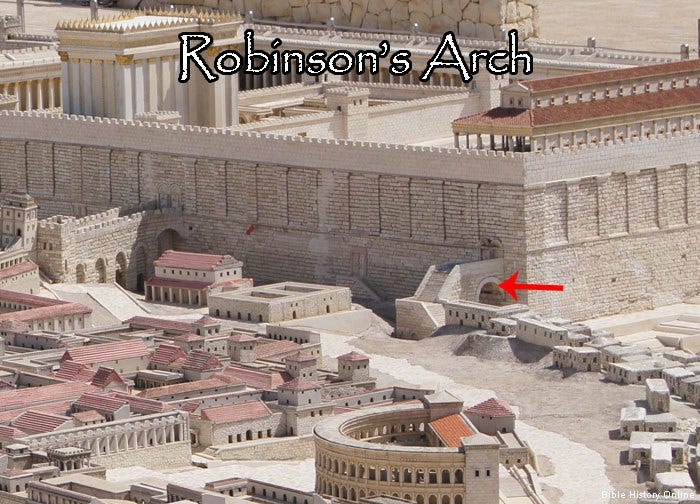
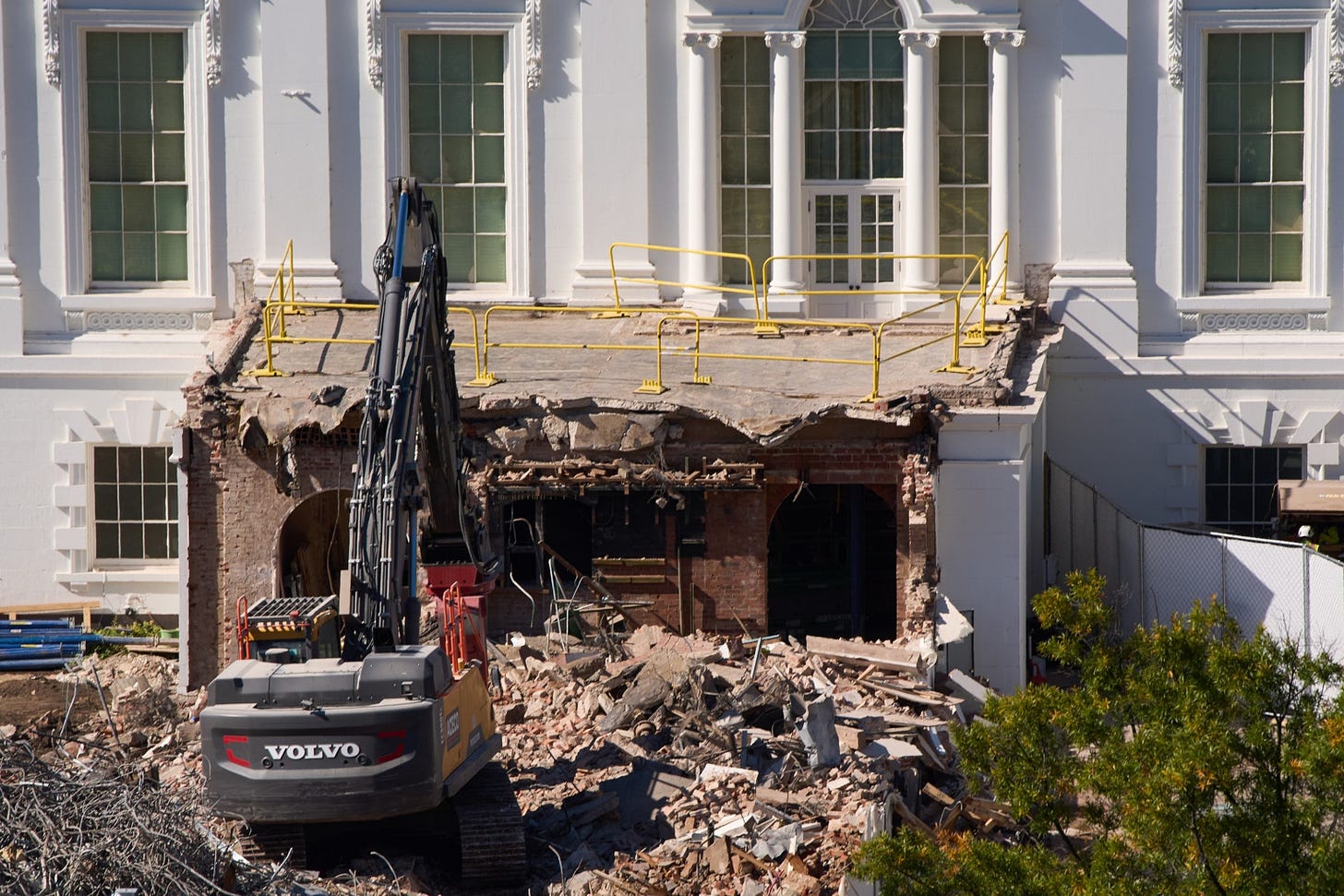

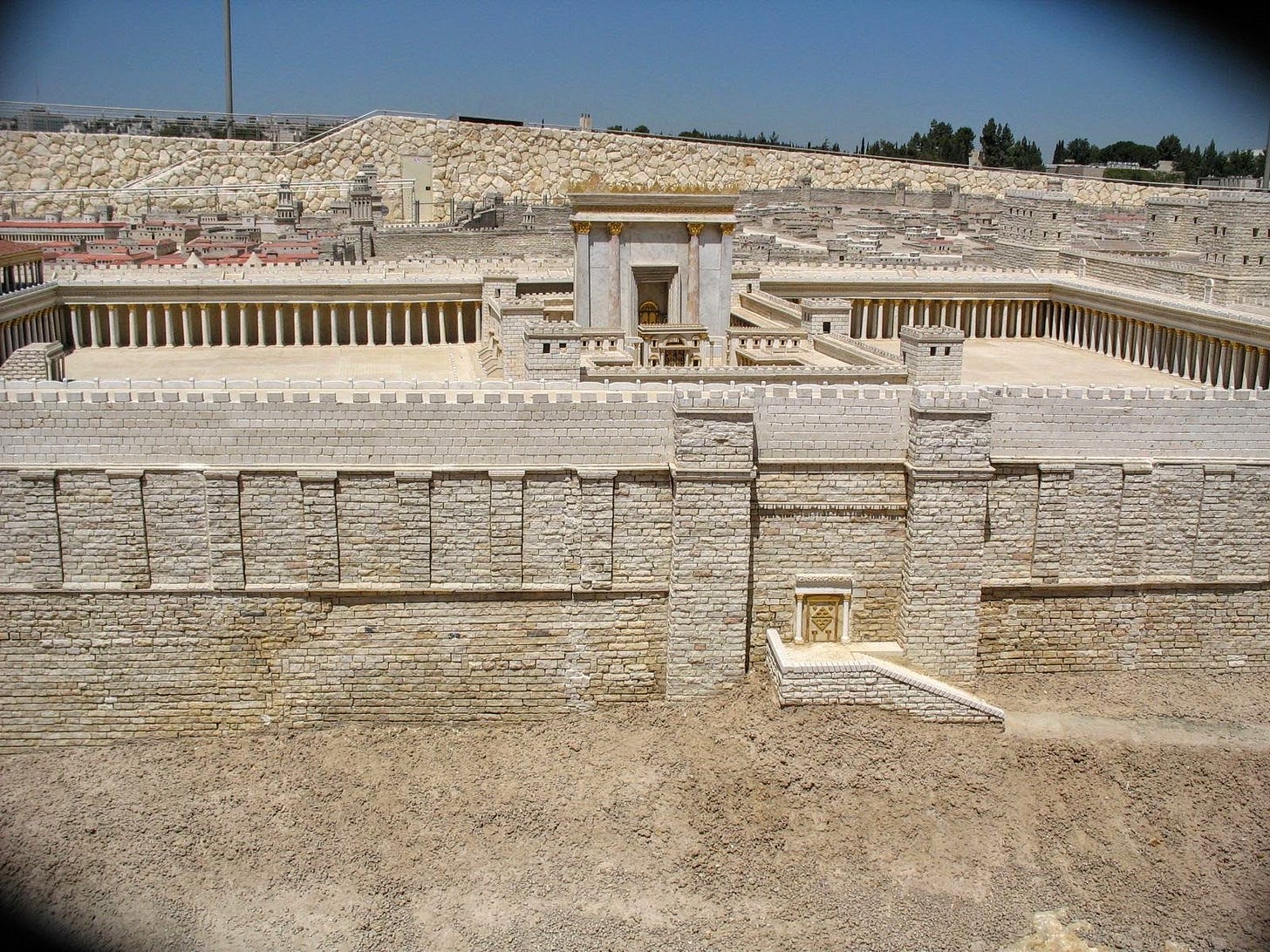
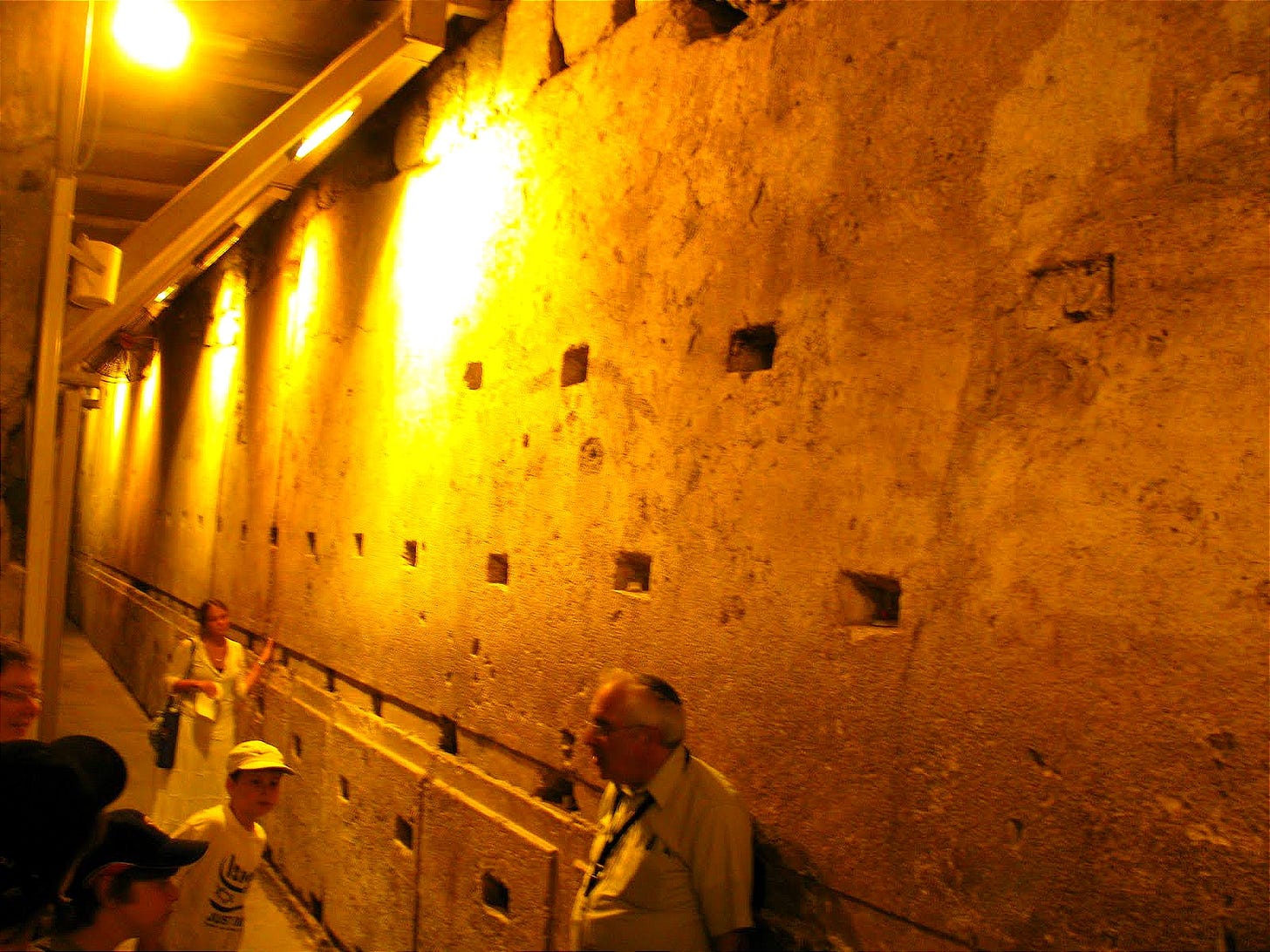
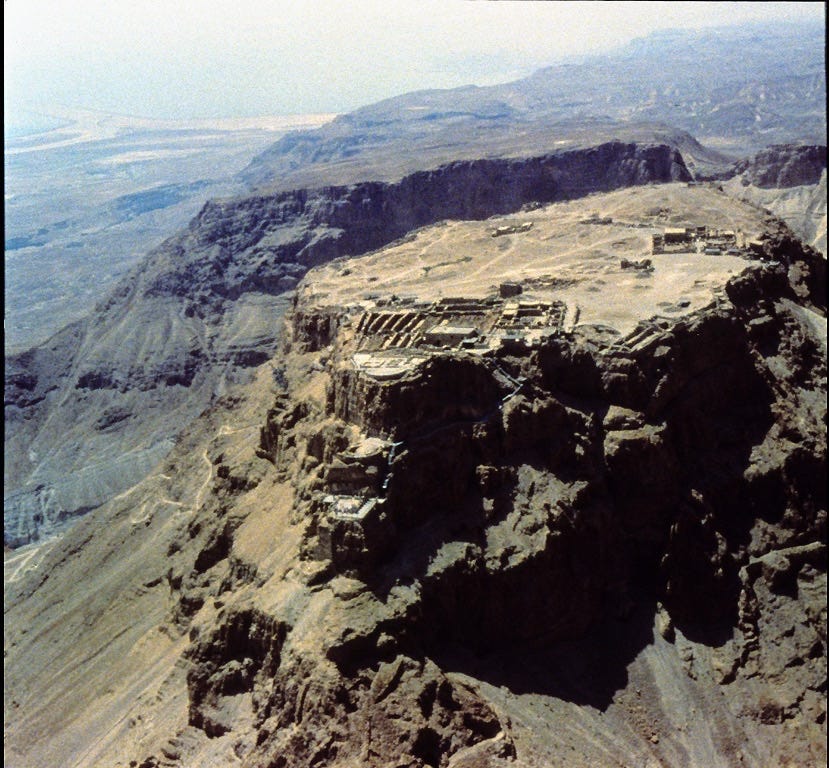
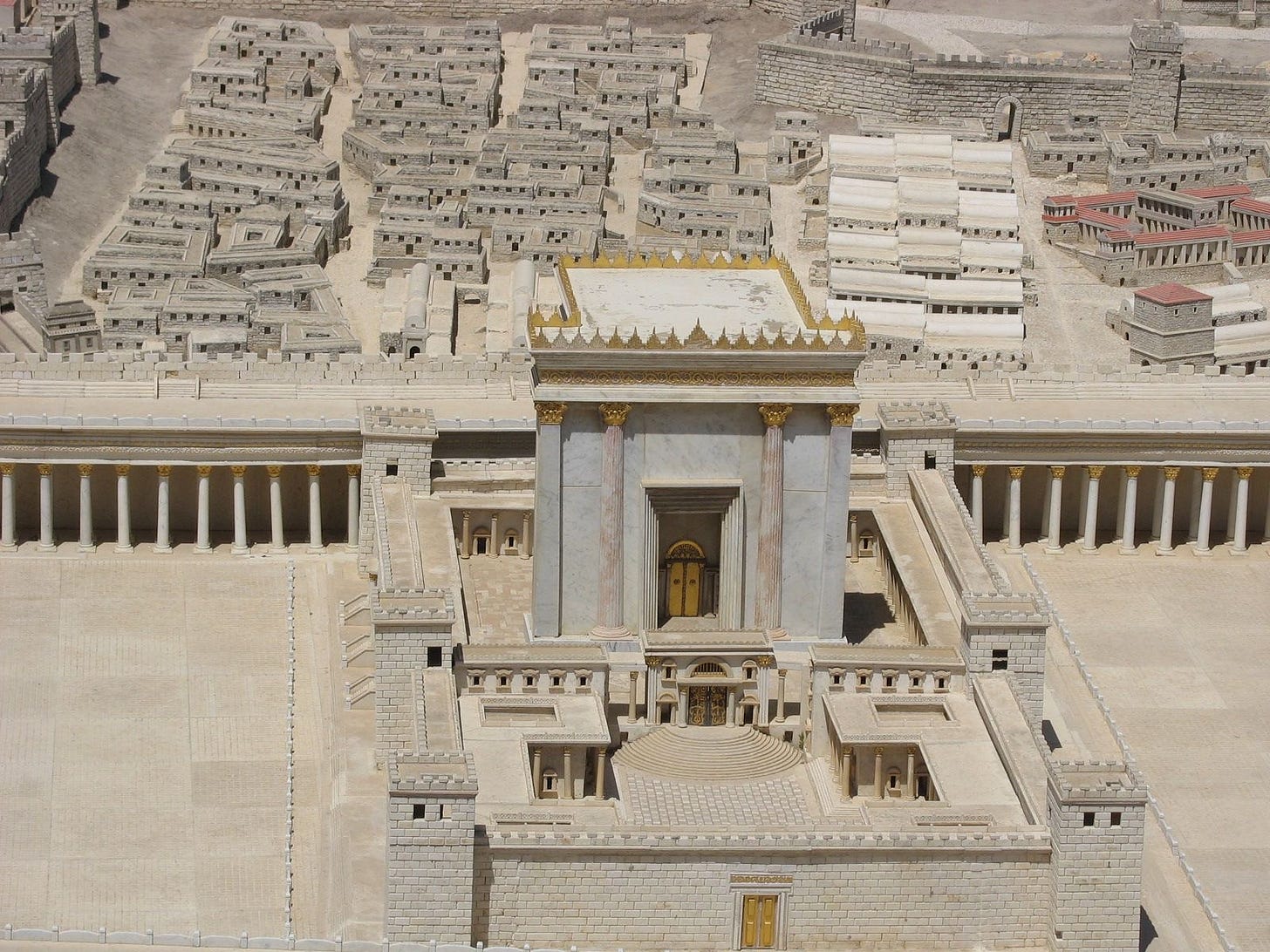
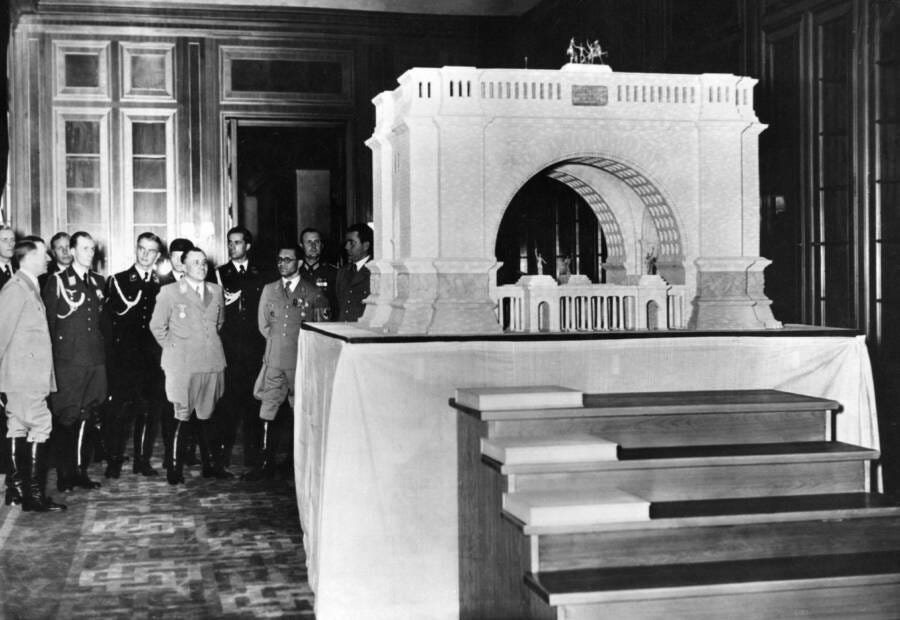
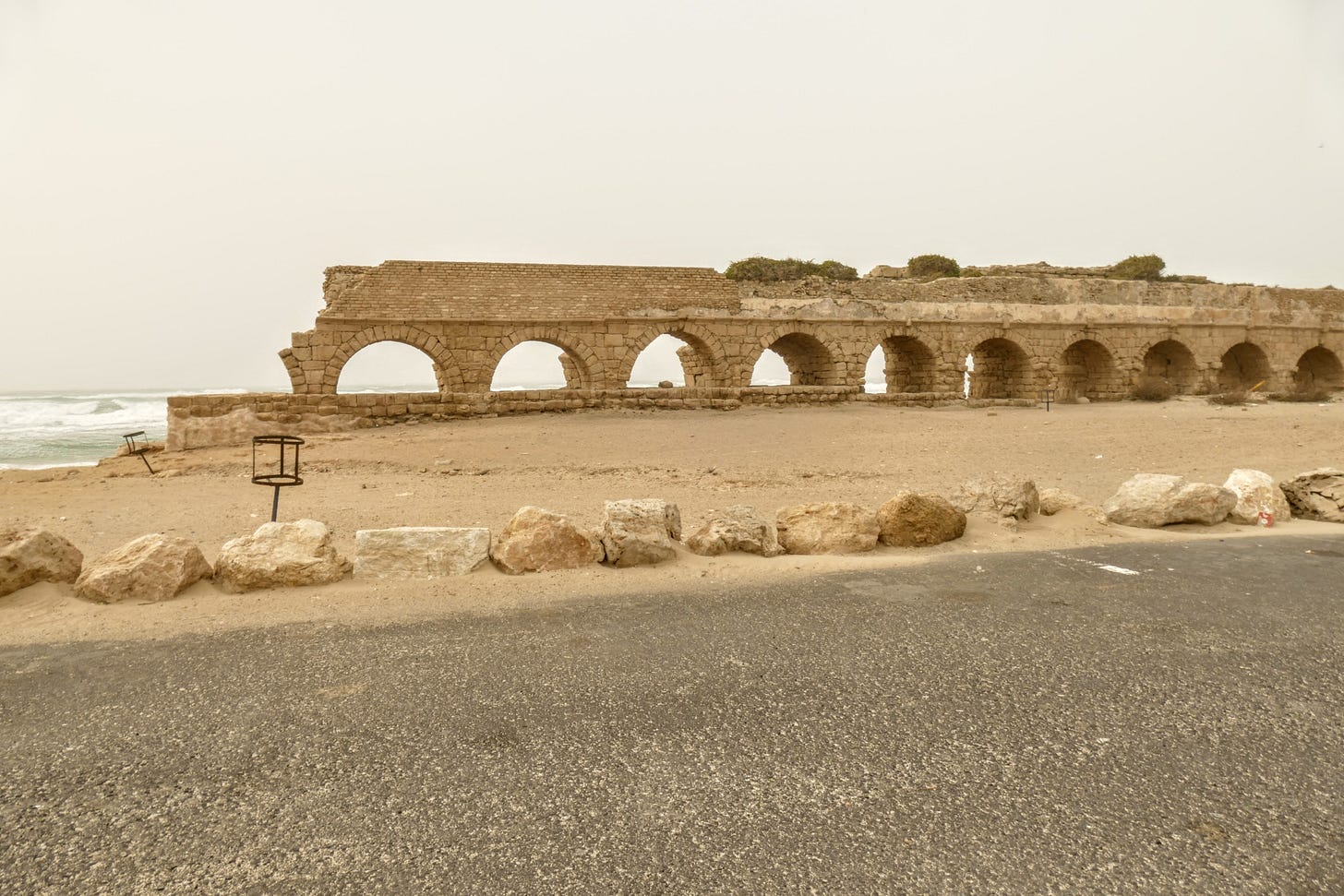
No comments:
Post a Comment